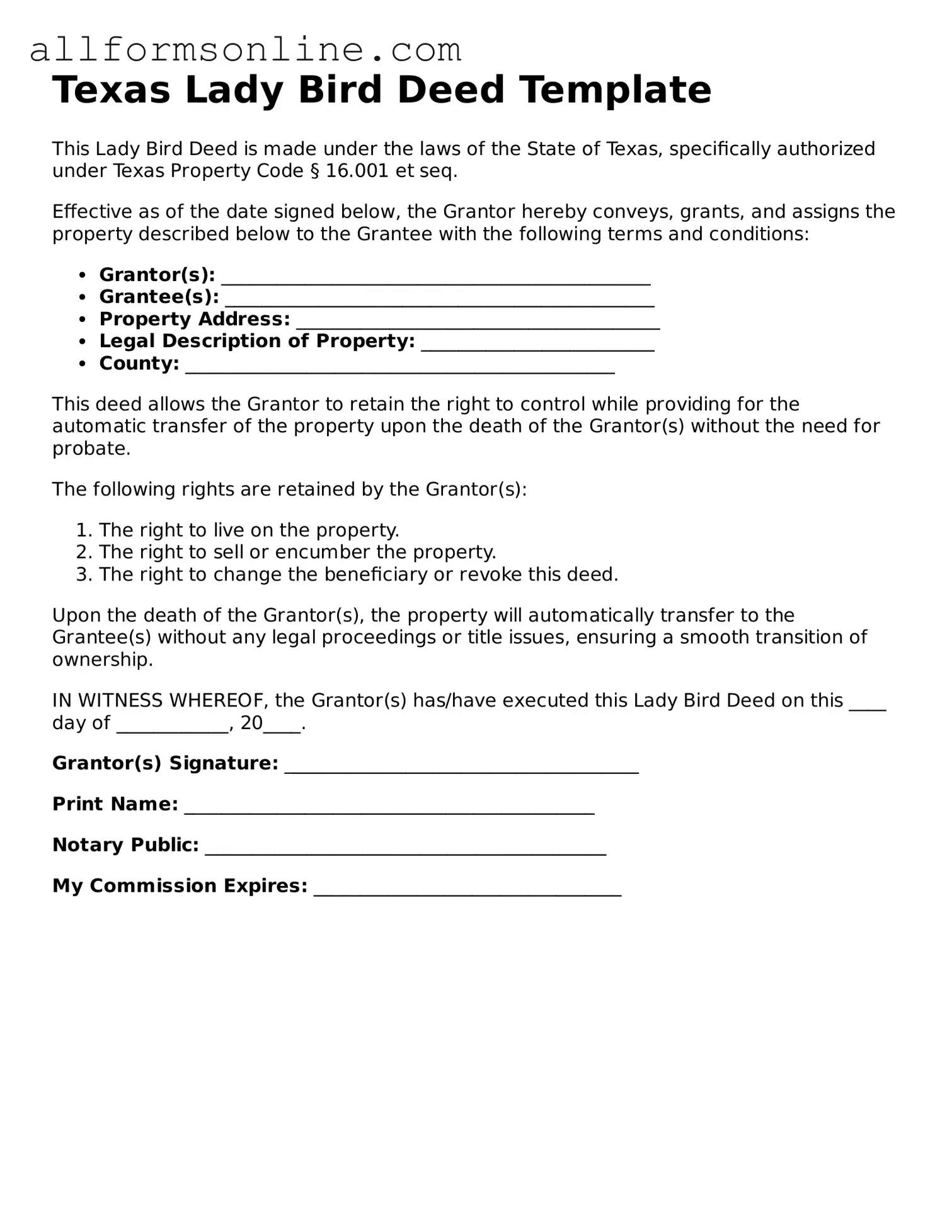What is a Lady Bird Deed in Texas?
A Lady Bird Deed, also known as an enhanced life estate deed, allows property owners in Texas to transfer their property to beneficiaries while retaining control during their lifetime. This type of deed enables the property owner to live in the home, sell it, or make changes without needing consent from the beneficiaries. Upon the owner's death, the property automatically transfers to the designated beneficiaries, bypassing the probate process.
What are the benefits of using a Lady Bird Deed?
There are several advantages to utilizing a Lady Bird Deed. First, it helps avoid probate, which can be time-consuming and costly. Second, the property owner retains the right to use and control the property during their lifetime. This means they can sell or mortgage the property without needing to consult the beneficiaries. Additionally, it may offer tax benefits, as the property can receive a stepped-up basis upon the owner's death, potentially reducing capital gains taxes for the beneficiaries.
Who can be named as beneficiaries in a Lady Bird Deed?
Beneficiaries can include anyone the property owner chooses, such as family members, friends, or even charities. The flexibility in naming beneficiaries allows property owners to tailor their estate plans according to their wishes. However, it is important to ensure that the chosen beneficiaries are aware of their designation and understand the implications of receiving the property.
How does a Lady Bird Deed differ from a traditional life estate deed?
The key difference lies in the level of control retained by the property owner. With a traditional life estate deed, the owner relinquishes some control over the property, as the beneficiaries often have rights to the property once the owner passes away. In contrast, a Lady Bird Deed allows the owner to maintain full control, providing greater flexibility and peace of mind during their lifetime.
Is it necessary to have an attorney to create a Lady Bird Deed?
While it is not legally required to hire an attorney to create a Lady Bird Deed, it is highly advisable. An attorney can ensure that the deed is drafted correctly, complies with Texas laws, and accurately reflects the property owner's intentions. Mistakes in the deed could lead to unintended consequences, making professional guidance a wise investment.
Can a Lady Bird Deed be revoked or changed?
Yes, a Lady Bird Deed can be revoked or modified by the property owner at any time during their lifetime. This flexibility allows property owners to adjust their estate plans as circumstances change, such as the addition of new beneficiaries or changes in personal relationships. To revoke or change the deed, the property owner must execute a new deed that explicitly states the revocation or modification.
